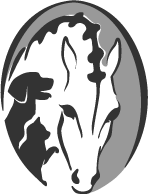Frequently Asked Questions
How do you adjust an animal?
Adjusting an animal is much different than adjusting a human due to the difference in anatomy, thus the reason animals should only be adjusted by certified animal chiropractors. Using our hands, chiropractors are able to localize joints of decreased mobility and perform precise adjustment in order to restore normal range of motion. With the restoration of motion, nerves are immediately able to increase their frequency of firing and improve nervous system function. The end goal is to improve communication between brain and body!
How long does an adjustment take?
Adjustments take anywhere from 5-20 minutes depending on the client! Some pets are much more relaxed than others and can be adjusted easily, whereas others may take a little more time to get situated. Keep in mind we only ever adjust your animal in their comfort zone, that way they only ever walk away with good experiences.
Can an adjustment worsen my animal or hurt them?
After being adjusted an animal may experience some soreness due to removal of long-time fixations. This soreness should not last very long and within a day or two will dissipate. An adjustment itself should never hurt, though on occasion an animal that is currently experiencing severe pain may note slight discomfort momentarily.
Will my animal be able to return to normal business immediately?
Individualized recommendations will be given after each adjustment for your animal. More often than not the animal should take the remainder of the day off to rest, however, not all of our patients think the same way. Often times with older pets there is a noted increase in energy level, if this is the case feel free to have some extra fun with your animal!
What kind of training does a certified animal chiropractor have?
- They are either a Doctor of Chiropractic or a Veterinarian
- They have successfully completed one of the 3 recognized animal chiropractic schools. Those schools are Options for Animals, Healing Oasis, and Parker Chiropractic College
- They are certified either by the AVCA (American Veterinary Chiropractic Association) or the IVCA (International Veterinary Chiropractic Association). There is NO Board certification in animal Chiropractic.
